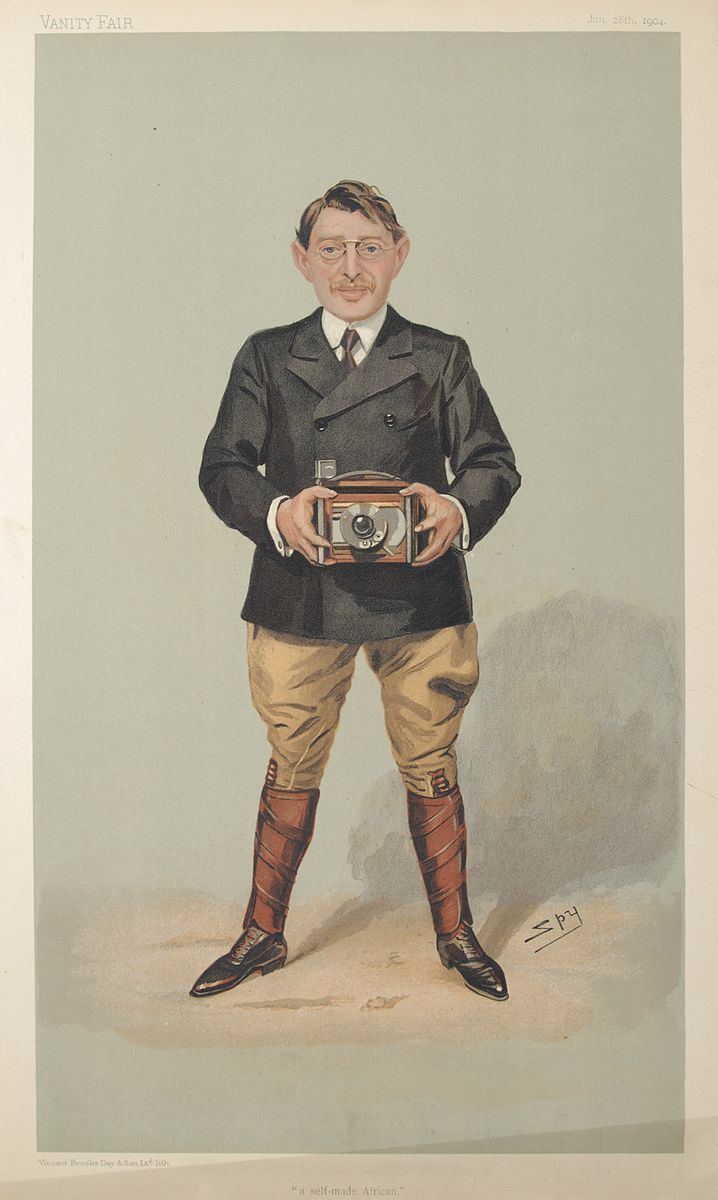Nationality British Children Charles Goldman Party Conservative Party Spouse(s) Agnes Mary Peel Died April 7, 1958 | Religion Jewish Role Author Political party Unionist Name Charles Goldman | |
 | ||
Born 1868 Cape Colony Occupation Journalist, author, and politician | ||
Charles Sydney 'Major' Goldman (April 28 1868 – 7 April 1958) was a British businessman, author, and journalist who served as a Member of Parliament (MP) from 1910 until 1918. There is a Memorial Stone of C.S. Goldman in the yard on the Murray United Church.
Contents
Biography
Born in Cape Colony, Goldman was a uitlander who spent much of his life in the Transvaal. As a young man he built up a fortune in mining, using some of the profits to purchase an extensive estate known as Schoongezicht in the Middelburg District. During the Second Boer War, Goldman was a war correspondent for The Standard.Charles Sydney Goldman was perhaps one of the Province’s most enigmatic historic figures. A German of Jewish ancestry, he left Germany for England, where he married the granddaughter of Sir Robert Peel. His next move was to South Africa, where he made a fortune in ostrich farming and gold mining. A major in the British forces during the Boer War, he assisted Winston Churchill as a war correspondent. He then moved to British Columbia, where he founded Nicola Stock Farm (now Nicola Ranch) in Merritt. He wrote a lengthy account of the Boer War, edited and translated several other historic works, as well as being a collector of Pre-Raphaelite art. One of his legacies still enjoyed by the public is Monck Provincial Park on the shore of Nicola Lake. Initially attached to Sir Redvers Buller's relief force, he traveled with them as far as Ladysmith after which he transferred to the cavalry advancing north in order to report on their endeavours. These experiences served as the foundation for Goldman's subsequent book With General French and the Cavalry in South Africa.
After the war, in an effort to gain political influence Goldman purchased the struggling weekly journal, The Outlook. Seeking to develop it into a prominent platform for the cause of tariff reformers, he hired the journalist J. L. Garvin as its editor. Garvin quickly transformed the journal into a publication of note, yet in spite of an increase in both prominence and circulation the paper failed to turn a profit. After a series of disagreements between the two men over business matters, Goldman sold the paper to Lord Iveagh in October 1906.
Still desiring a political role, Goldman involved himself in politics directly by entering Parliament, winning the Penryn and Falmouth seat in the January 1910 general election as a Unionist and serving until the borough was abolished in 1918 (the name was transferred to a new county division). During the First World War, Goldman served as a major in the Cornwall Royal Garrison Artillery. In 1919 he purchased the Nicola Ranch and Town site in Nicola,British Columbia which grew to some 300,000 acres (1,200 km2). He owned all the way up to Monck Provincial Park. Which is now that name. He named this park after his son Commander Victor Robert Penryn Monck of the Royal Navy. In England Goldman lived at Trefusis House, Falmouth until about 1929, after which he moved to the Jacobean mansion at Yaverland Manor.
Family
Goldman married, in 1899, Honourable Agnes Mary Peel (1869-1959), daughter of liberal politician Arthur Peel, 1st Viscount Peel. She was decorated with the Royal Red Cross, and was in December 1901 appointed a Lady of Grace of the Venerable Order of Saint John of Jerusalem. They had 3 children.
